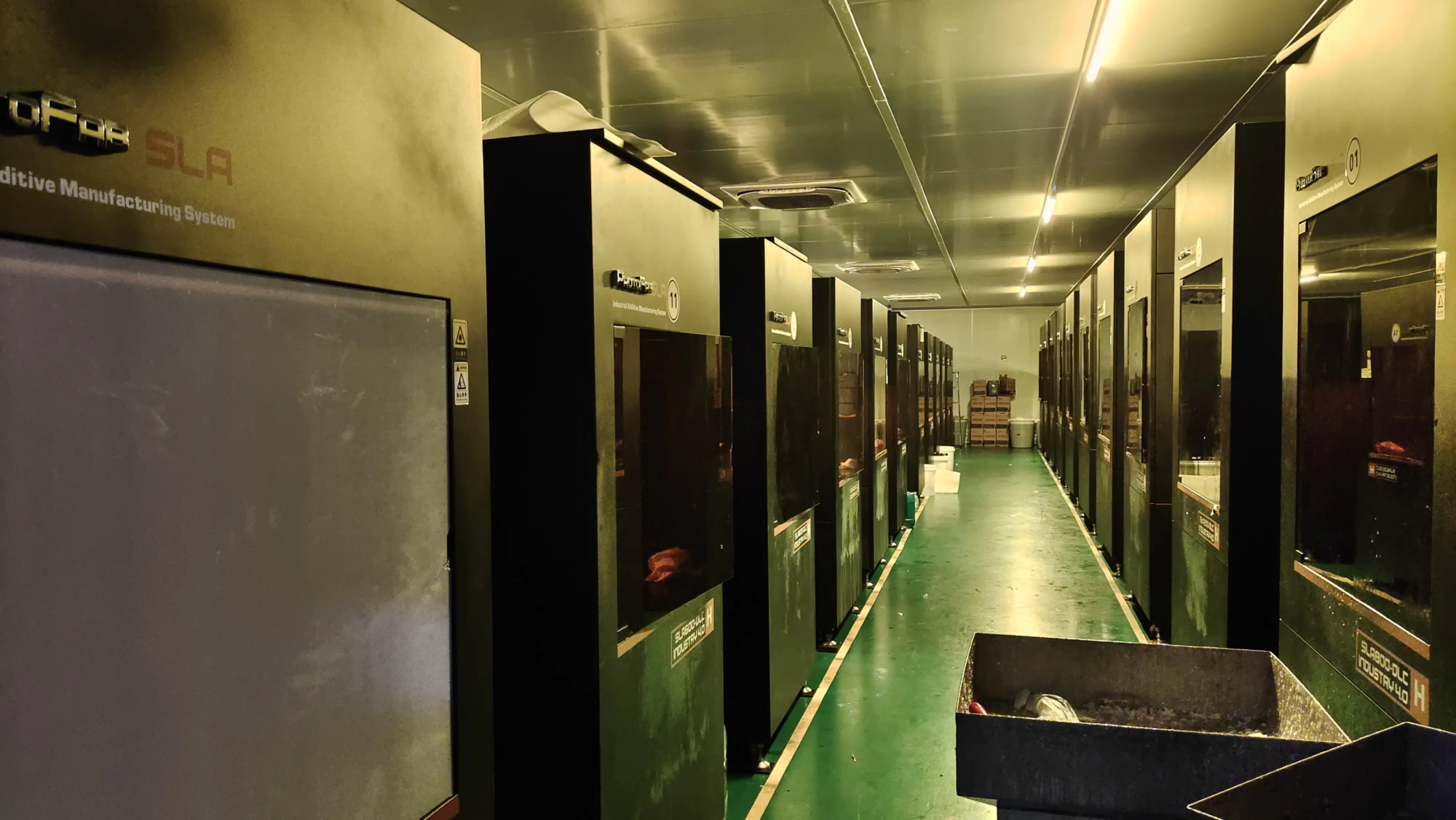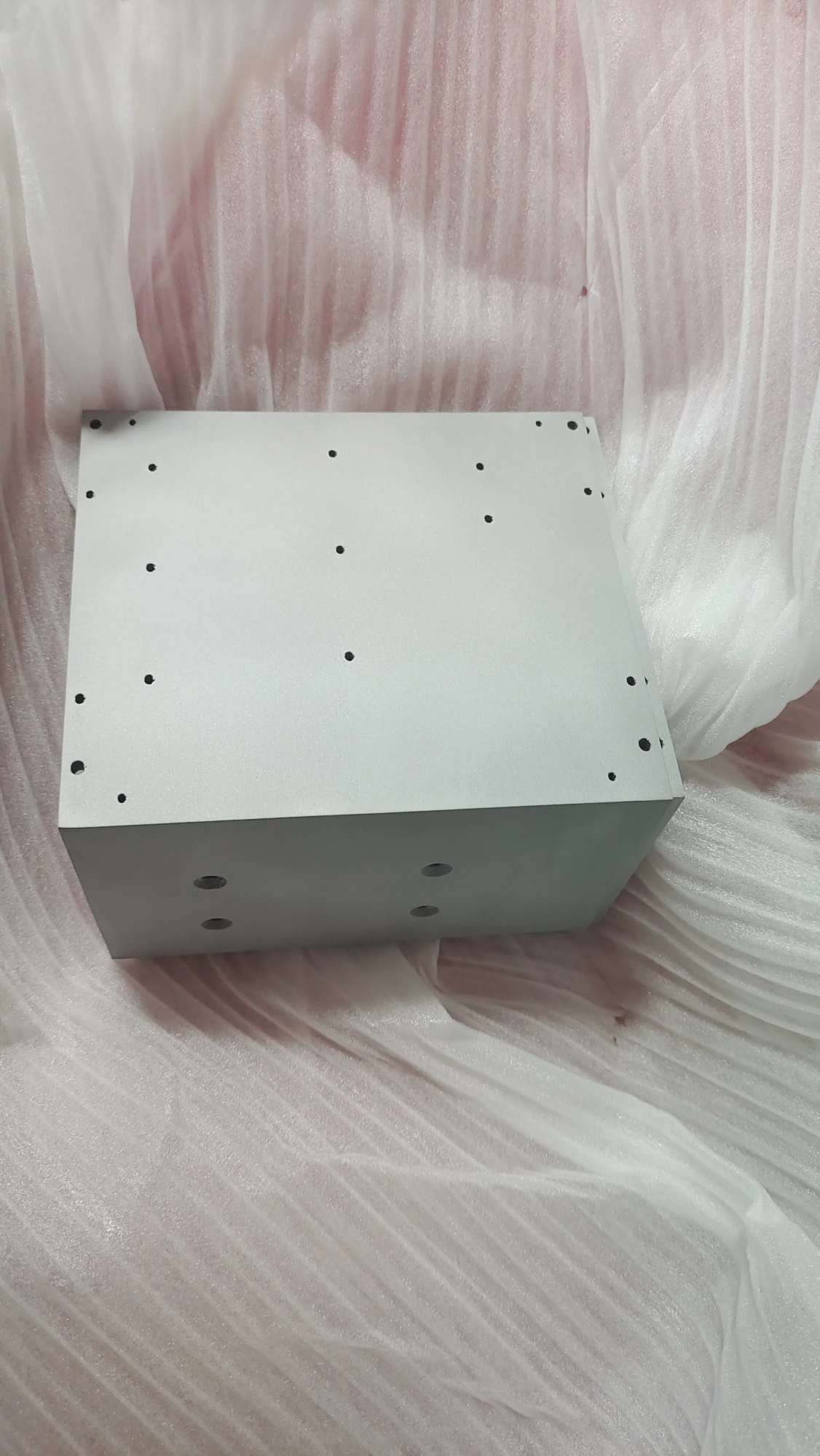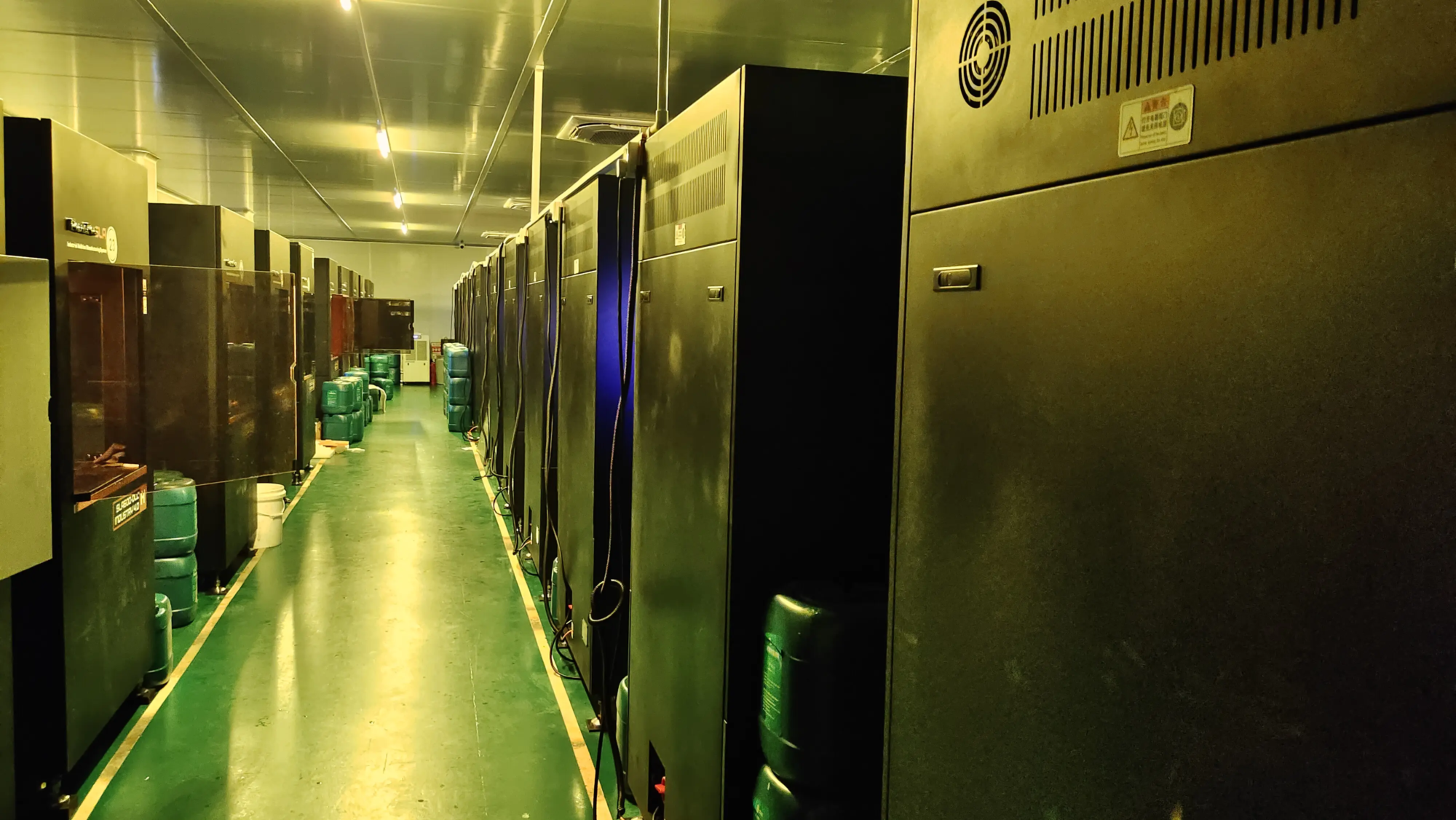Free your internal merc: The ultimate 3D printed Deadpool guide (files, finishes and pro tips)
So, you decided to bring Merc to life with your mouth and come to life immediately from your 3D printer? A wise choice! Creating a Deadpool mask is one of the most meaningful role-playing projects, with great creativity in detail and finishing. However, browsing available documents and mastering the ocean of printing and post-processing can feel daunting. Don’t be afraid, Chimichanga enthusiast! This guide has a deep dive into everything you need to know about 3D printing the iconic Deadpool Mask. 🚀
Part 1: Finding the Perfect Digital Blueprint – Deadpool Mask STL File
The basis for any excellent printing is the file. For Deadpool, you have the option:
Free Files (Hunting for Haggling): Websites like Thingiverse and Printables feature many free Deadpool mask designs. Search terms similar "Deadpool Mask," "Deadpool panel," or "Mercmask" Yield results.
- advantage: Cost-effective, diverse.
- shortcoming: Different quality crazy. Some people may lack details, have loopholes, poor variety (non-tight), inappropriate scaling or simplified representations.
- Key Check: Find high polygon counts, preview images from different angles, positive comments on printability, and a complete manifold grid. Read the comments!
Advanced/paid documents (quality investment): Platforms like cults3d, myminifactory, and Cgtrader have excellent, professionally modeled Deadpool masks.
- advantage: Special details (think comic precision wrinkles, defined eyes/nose), usually pre-supports of resin printing, cleaning topology, optimized for printing, and sometimes modular fragments (such as additional lenses or alternative expressions).
- shortcoming: Spend money (although the quality is usually reasonable).
- value: Savings on troubleshooting and superior end results often justify costs.
- Design notes:
- Size is important: Accurately measure your head circumference and distance from your brow to your chin. Most files require extensions. First, print the small test piece.
- symmetry: Make sure the design is symmetrical to the professional look.
- Wall thickness: Look for designs that have consistent, suitable for printer thickness (e.g., FDM is 1.5-3mm, which is less likely to be resin). Thin = lighter but more fragile.
- Eye: Can you integrate the lens? Is the eye pre-cut? Some designs require separate lens plugins.
Part 2: Print Your Mercmask: FDM Showdown with Resin
Choosing printing technology can affect the work required to complete, time and effort:
Fusion deposition modeling (FDM -PLA, PETG, ABS):
- advantage: Stronger parts (especially PETG/ABS), larger build volumes are readily available, usually with lower material costs, and a wide range of material choices.
- shortcoming: Visible layer lines, smoother required for greater polish/priming, making it harder to capture the details effectively. It may require a lot of support, leaving flaws behind.
- Key FDM settings: Slow down printing (20-40 mm/s). Use a small layer height (0.1-0.15mm) for better detail. Optimized support (tree support is complex overhangs such as nose bridges). Use edges for adhesion. Calibrated carefully!
- Stereo-lithography (SLA/MSLA-resin):
- advantage: Excellent detail resolution – Capture all subtle wrinkles and contours. The surface surface effect on the construction board is significant. Great for capturing organic shapes of the face. Less visible layer lines mean less dense polishing.
- shortcoming: The parts are inherently more brittle. Demand careful post-treatment (washing, curing). Resin treatment requires safety precautions (gloves, ventilation). Deformation after curing can be a problem for large thin parts such as masks, if done accidentally. Usually each part is more expensive.
- Key resin settings: Make sure to provide enough support for such a large print (automatic support usually requires adjustment, especially under the chin and cheeks). Optimize the exposure time of the resin/slicer. Position carefully outward to minimize suction and large cross-sections.
Part 3: Production or Destruction Phase: Post-processing and Finishing
Here is where your mask changes from plastic to superhero gear:
- Supports disassembly and initial cleaning: Be careful to remove the support. For resin, each resin is indicated to wash thoroughly. Use scissors, hobby knife or rinse the cutting machine. Grind the support block.
- Solving the symphony (especially important for FDM): This is most of the job of a smooth mask.
- Start rough (~80-120 grit) to level the main layer line and support residue.
- Gradually move to medium (180-240 particle size) and fine particle size (320-600+ gravel). Wet sand can reduce dust.
- Focus: You want a nearly seamless surface. defect Will be Show under paint. Pay special attention to the outlines around the eyes, nose and mouth. A rotating tool with sanding accessories can save hours.
- Fill and start:
- Apply fillers, such as Bondo Spot Putty or Specialized 3D printed fillers, to any remaining pits, scratches, or laminates. The sand is smooth after curing.
- Start-up is not negotiable: Apply high-build primer fill spray paint (e.g., automotive fill primer). This further smoothes the surface and reveals the defect. Dry >>> Hourglass >>>Repeat until completely smooth. Multi-layer is a standard accessory. This step is more important than any other step.
- Perfect painting:
- Basic color: Spray paint dominates supreme coverage. Use high-quality paint designed for plastic/auto use. Deadpool’s signature red requires several thin coats (a light grey primer helps the red pop up). Allows complete drying/curing between coats.
- detail: Black eyes and contours/shadows need to be precise. A high-quality acrylic paint brush or spray gun is ideal. Use the painter’s tape (low key) carefully to make the crisp lines around the eyes. The fine-tip mark can be used to outline the details, but may be wiped without sealing.
- texture: Deadpool’s suits usually have a subtle texture. Gently rubbing the basic red jacket will help before adding weathering or using a specific matte/flat to remove slightly teeth.
- Weathering and sealant:
- Optional weathering: Will your Deadpool see action? Use strategically wipe the darker acrylic wash (black/brown paint dilution) into the gap. A dry brush made with lighter red or silver will put a highlight on the edges. subtle!
- Sealed transaction: It is crucial for durability. Apply a sheer jacket that is compatible with paint. Gloss is a classic Deadpool, but the satin/matte look great too. Multi-layer coating ensures protection. If you are wearing outdoor activities, consider a clear coat that is resistant to UV.
Part 4: Installation, Lens and Practicality
- Wear it: Use drill holes to attach to the elastic band on the sides, internally bonded foam filler to cushion, or integrate it into a full hood/Balakraf setup to secure the mask comfortably.
- Clearly see: It is crucial for safety! Don’t just cut the eye holes. Cut with flexible clear plastic sheets (PETG, thin polycarbonate) to fit the eye opening of the mask. Use transparent red spray color or special lens swatch/film to red. Make sure your vision is not obstructed.
Conclusion: From thin filaments to super suits
The 3D Printed Deadpool Mask is an ambitious but incredibly satisfying project that blends digital design, engineering and artistic craftsmanship. Whether you choose the affordability and strength of FDM, or the breathtaking details of the resin, it’s all about the details: selecting quality files, meticulous calibration, relentless post-processing (especially sanding and startup), and precise paint jobs. Remember, patience is your superpower here. Don’t rush to polish, primer or painting stages; the additional investment in investment will shine in the final professional score.
Considering the real good performance? When you conquer printing and finish Great Understand the needs of high-quality prototype production. As a leading rapid prototyping manufacturer with cutting-edge SLM 3D printers and expertise, we specialize in solving complex challenges – especially in Metal components – and provide comprehensive post-processing. If your project requires unparalleled precision, strength, or complex metal elements, it’s beyond what a DIY printer can offer, Great Provides custom solutions, fast turnaround and competitive prices. We are proud to be one of China’s major rapid prototype partners. [Link to GreatLight Services or Get Quote Page] Customize your precise and fast prototyping parts!
FAQ: Your Deadpool Print Questions, Answers
Q: What is the best free Deadpool mask file?
- one: It changes often! Search for Thingiverse/Printables sorting "Always popular". Look for advanced models with good reviews to mention successful prints and details. "Modular mercmask" Derivatives are usually firm.
Q: FDM or resin wear a Deadpool mask?
- Answer: Resin Win details and smoothness. FDM Continuity, cost and ease/safety wins large items. Resin requires greater post-treatment care and treatment precautions.
Q: How to smooth my 3D printed mask like a movie version?
- one: Consume and polish! FDM requires extensive sanding (from coarse sand to fine grain size) + filler + high build primer filler + more sanding between primer coatings. The resin starts to be smoother, but will still benefit from finer sanding and primer. The smoothness is 90% prepared.
Q: Which paint should I use on my PLA/resin mask?
- one: Quality spray paint (auto or plastic-specific primer/paint) designed for plastics is crucial. Sealed with a compatible sheer jacket. Acrylic paint is perfect for details. First, test the paint on the scrap! Avoid incompatible paints that may melt the plastic.
Q: How to securely fix the lens?
- one: Carefully cut out flexible red plastic plates (PETG, thin PC) larger than the eye opening. Connect it safely to in Use strong double-sided tape, small screws with washer or a transparent silicone sealant mask. Make sure there are no sharp edges that can touch the eyes.
Q: My mask was too big/small after printing! help!
- one: Always expand the model forward print. Measure your head accurately (round the circumference above the eyebrows, towards the chin brow). Use the reference dimensions of the model in the slicer to scale. Print 1:10 test head "ring" Or just verify the appropriate chin part first.
- Q: Can Greatlight print the entire mask for me?
- one: although Great Core expertise in Rapid metal prototyping Using advanced SLM technology for industrial grade parts, our extensive finishing services (smoothing, start-up, painting, polishing, texture, texture) and features may be applied to the elements of the mask, requiring extremely precise, complex details beyond typical FDM/resin, or producing unique materials (such as polished metal materials). Please contact you for your specific requirements! We do well in complex custom solutions.
Go out now, print and paint! Remember that once you are right for you, you can break the fourth wall. Happy production! 😊✨





